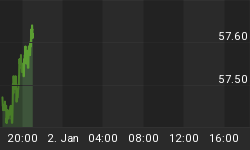The past 12 months have seen an explosion in the market for digital collectible cards with “Sports Cards” searches recording a more than 100% surge according to Google Trends. Apparently, people are willing to pay ridiculous amounts of money for tokenized assets such as sports cards.
Recently, a tokenized 13-second video play of Zion Williamson’s New Orleans Pelicans debut was sold as a non-fungible token (NFT) for $100,000, while another for a LeBron James dunk sold for an eye-popping $208,000.
Even Mark Cuban, the eccentric billionaire who has previously expressed serious misgivings about the bitcoin/crypto craze and likened it to the Dotcom bubble of 25 years ago, has just conceded that NFTs are the real deal because “you can sell anything digital using NFT”.
Cuban has told CNBC that were he to start a company today, he would center the business around NFTs, blockchain technology and smart contracts.
Meanwhile, the NBA has helped popularize the NFT concept after launching the NBA Top Shot platform that allows users to buy or sell officially licensed NBA video highlights, known as “Moments”.
From art and videos and music to real estate and even tweets, the way we invest in assets is changing fundamentally with the arrival of tokenization. The tokenization of assets is threatening to disrupt many industries, not least the financial industry which is in danger of being left behind.
But first things first, what is tokenization, exactly?
What is tokenization?
The tokenization of assets refers to the process by which a blockchain token is issued to represent real, tradeable assets such as art, music and even tangible ones like buildings--comparable to the traditional securitization process, but with a modern twist.
The security tokens are created through an initial coin offering (ICO) or security token offering (STO).
An STO can be used to create a digital representation of an asset, meaning it could represent ownership in a company, real estate, investment fund etc.
Non-fungible tokens take this concept further.
Non-fungible tokens, or NFTs in short, are unique cryptocurrency tokens used to represent assets such as digital art, movies or music. NFTs can be bought and sold like any physical asset; however, they have the big advantage of running on blockchain, meaning ownership and validity of the asset they represent can be accurately tracked.
For example, if an art creator can put an NFT-based piece of artwork up for sale where a buyer can purchase a unique token that represents the asset and use it to prove ownership and authenticity of the digital art through blockchain.
NFTs are a new blockchain tool to tokenize all manner of digital media. The NFT market has exploded this year, with experts placing its worth north of $400 million.
NBA Top Shots is an NFT platform that allows fans to buy and sell numbered versions of video clips of player highlights called "Moments”. The platform has been experiencing explosive growth, with weekly sales currently clocking in at $50 million.
Amazingly, bids on a 5-letter tweet which reads "just setting up my twttr" recently hit an eye-popping $2.5 million, thanks to two crypto influencers helping push the price past the $2 million mark. Twitter CEO Jack Dorsey shared the tweet with a link to the "Valuables" platform that allows for the buying and selling of tweets autographed by their creators.
The new ‘token economy’ is disrupting traditional financial markets by making the securitization process much smoother. Tokenized assets offer greater liquidity, faster and cheaper transactions, more transparency and better accessibility than traditional securities.
Traditional financial institutions are increasingly picking their spots in this new tokenized economy.
Some are playing the role of adviser by advising issuers how to structure their tokens while others are acting as safekeepers of the tokenized assets. Others are leveraging their expertise as custodian banks or paying agents that implement lifecycle processing in smart contracts. For example, the payment industry is increasingly promoting new payment form factors that require increased protection against counterfeiting, account misuse, and other types of fraud. Tokenization is commonly used to protect payment card data so that merchants can reduce their obligations under PCI DSS, a key feature that is expected to drive the growth of the tokenization market.
Overall, the tokenization market is still small, but is expected to grow at a brisk 13% CAGR to reach $2.2B by 2026, driven by new players rapidly building their own infrastructure while traditional market players continue paving the way for mainstream adoption.

















